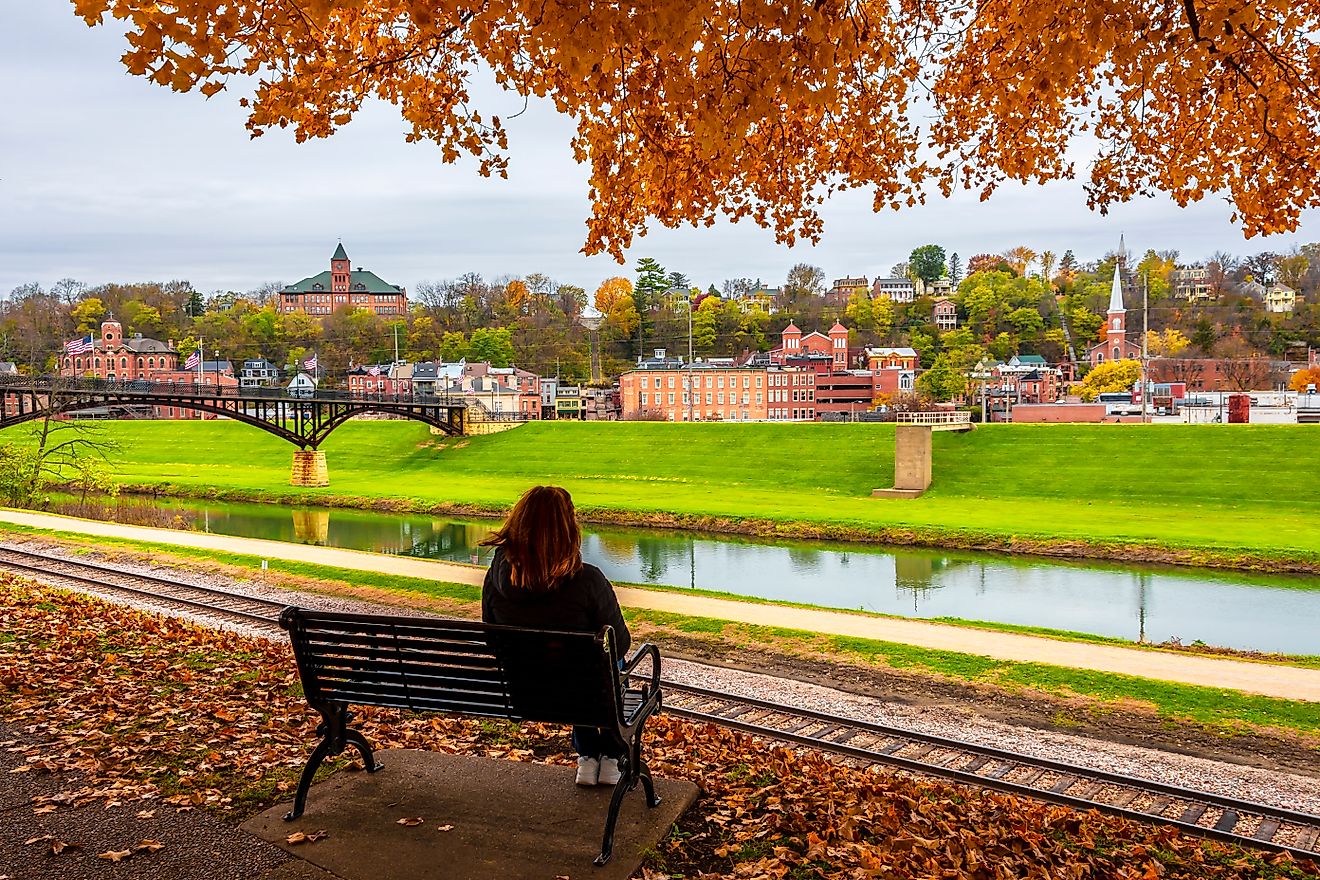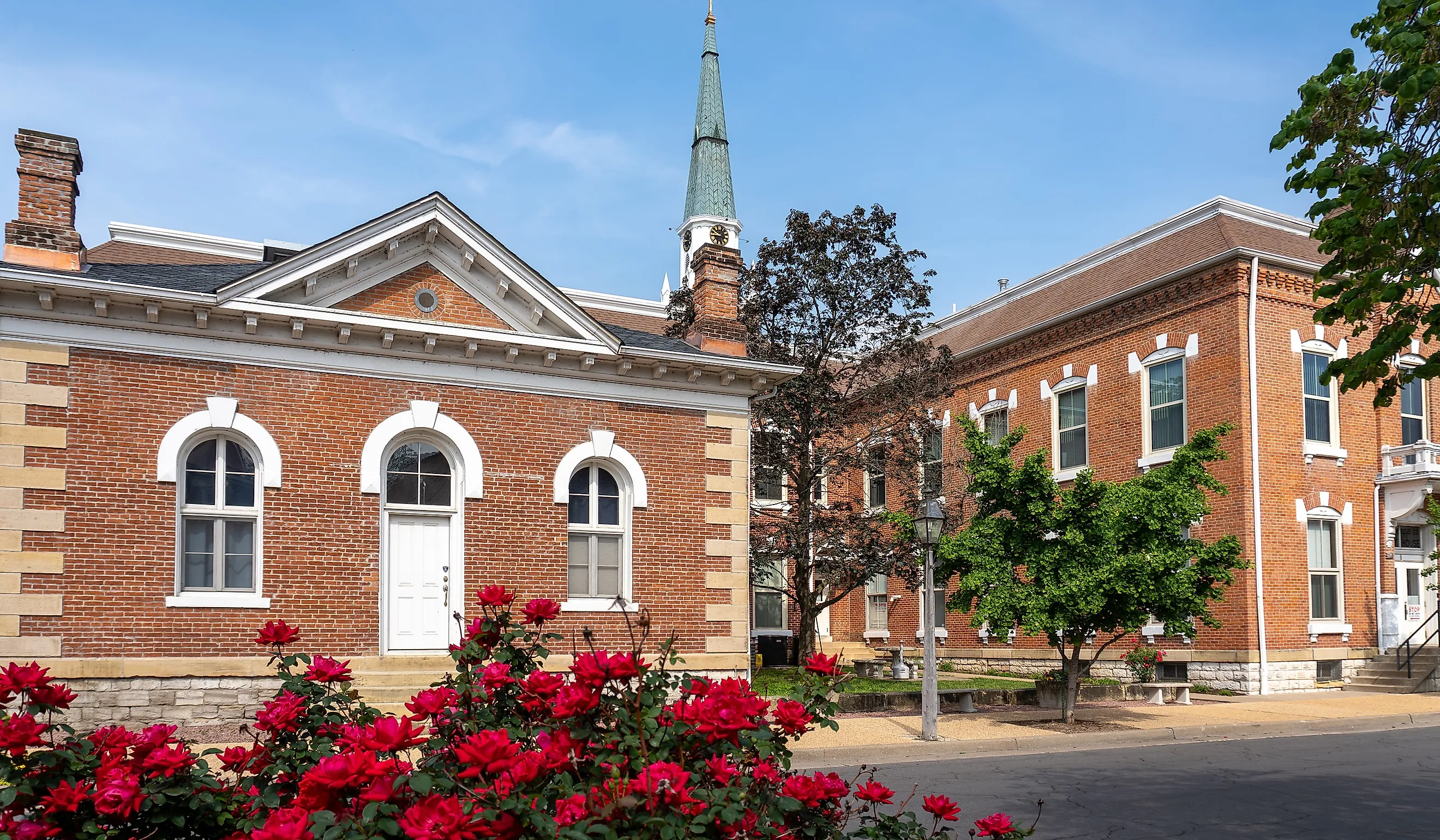
10 Missouri Towns That Echo The Past
Missouri holds more than 90 designated historic districts, from French settlements to frontier river ports that helped shape the nation. It doesn’t just preserve history. It lives in it. From French Ste. Genevieve on the Mississippi River to Mark Twain’s Hannibal, every corner of this state carries a story. You can still hear wagon wheels on cobblestone, smell bread baking in century-old ovens, and catch the fingerprints of settlers, soldiers, and storytellers in every creak and corner.
These aren’t museum towns. They’re alive, steady heartbeats from another century.
Ste. Genevieve
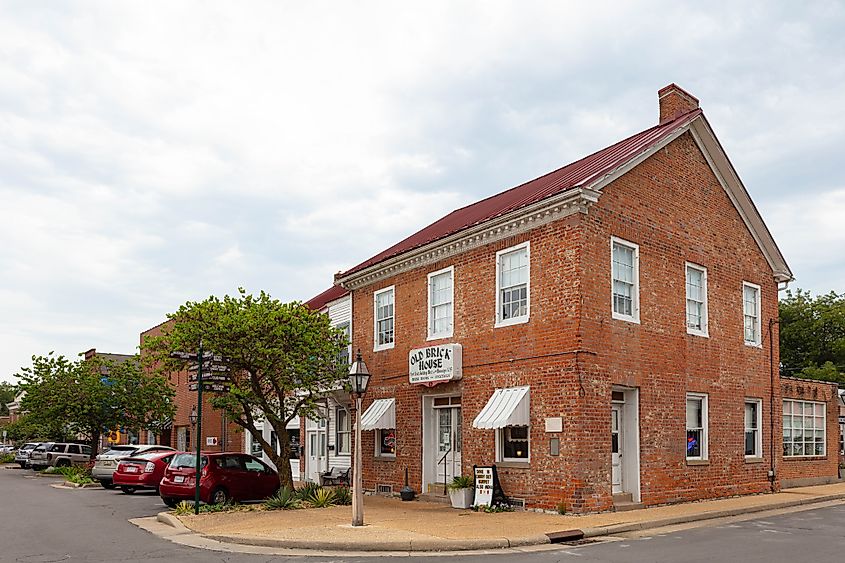
Walk through Ste. Genevieve and it feels like stepping into a chapter older than the United States itself. Founded in the early 1700s by French settlers, it’s Missouri’s first European town, and that legacy still hums through its limestone buildings and wide French-style porches.
The Ste. Genevieve National Historical Park anchors the story with homes and landmarks nearly three centuries old, joined by state and private sites that together keep this French colonial town alive. You can step inside the Felix Vallé House State Historic Site, where shelves still hold bolts of fabric and ledger books from the town’s trading days. Just down the street, the Bolduc House Museum offers a closer look at the families who built their lives on the edge of the frontier, their stories told through heirlooms and sturdy timber walls.
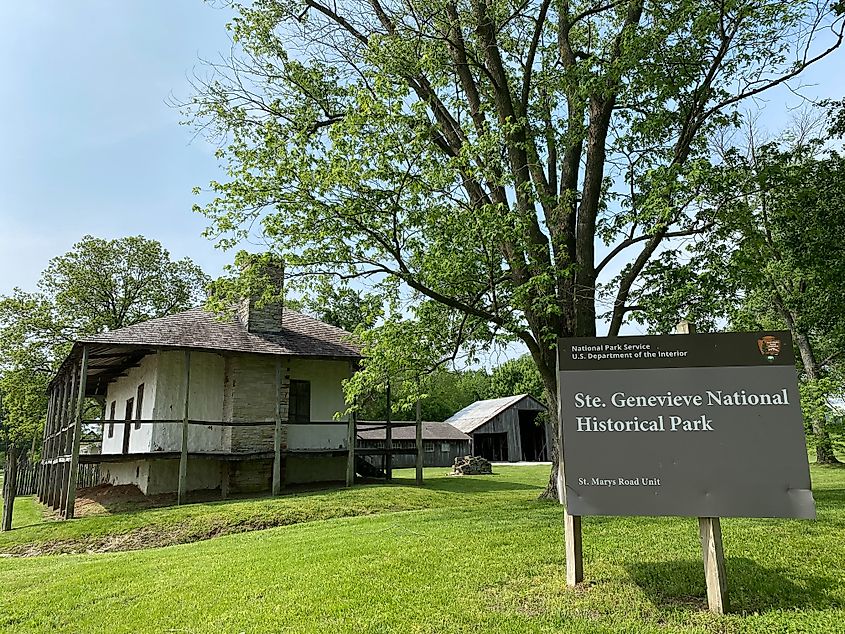
Nearby, the Centre for French Colonial Life ties it all together with exhibits that explore how settlers adapted European traditions to the Mississippi Valley. Walk a few blocks farther and you’ll find art galleries, cafes, and bed-and-breakfasts housed in those same 18th-century buildings.
If you visit in June, the French Heritage Festival fills the streets with fiddles, open-air markets, and the rhythm of wooden shoes on cobblestone. For a second, you half expect a fur trader to step out of an alley, musket on shoulder, grinning like he owns the place.
Hermann
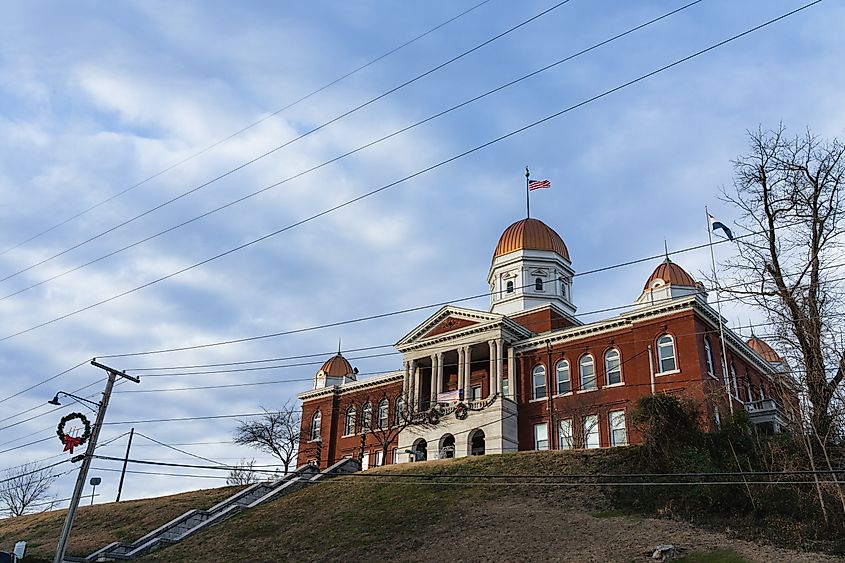
If you’ve ever dreamed of visiting Germany without crossing the Atlantic, Hermann is the next best thing. Founded in 1837 by German immigrants, the town curls along the Missouri River with red-brick buildings, hillside vineyards, and a sense that time slows down here on purpose.
At the Deutschheim State Historic Site, you can walk through rooms filled with hand-hewn furniture, clay stoves, and tools that once kept families warm and working through long winters. The site preserves how early settlers blended Old World traditions with frontier life, down to the gardens that still grow heirloom vegetables from the 1800s.
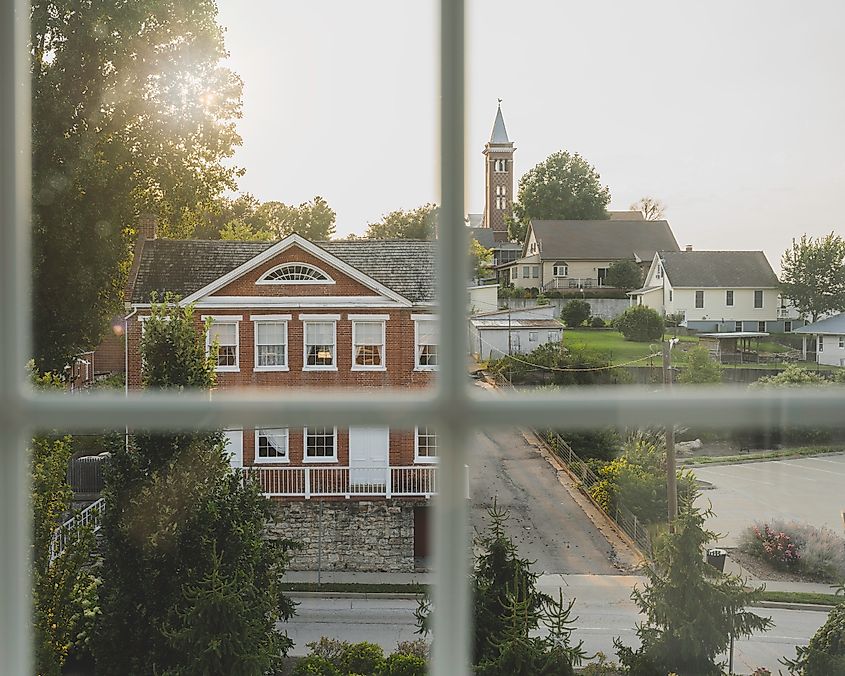
Wine remains Hermann’s heartbeat. The Stone Hill Winery, established in 1847, is one of the oldest and most celebrated in the Midwest, its cool stone cellars still carrying a faint blend of oak and earth. A short stroll away, Hermannhof Winery continues the legacy with tasting rooms tucked inside restored brick buildings from the town’s early days.
Out at the Hermann Farm Museum, draft horses clip through the grass as if the 19th century never left. Stick around until sunset, and you might hear the faint hum of music from a patio overlooking the river, a reminder that some traditions never fade. They just age beautifully.
Arrow Rock
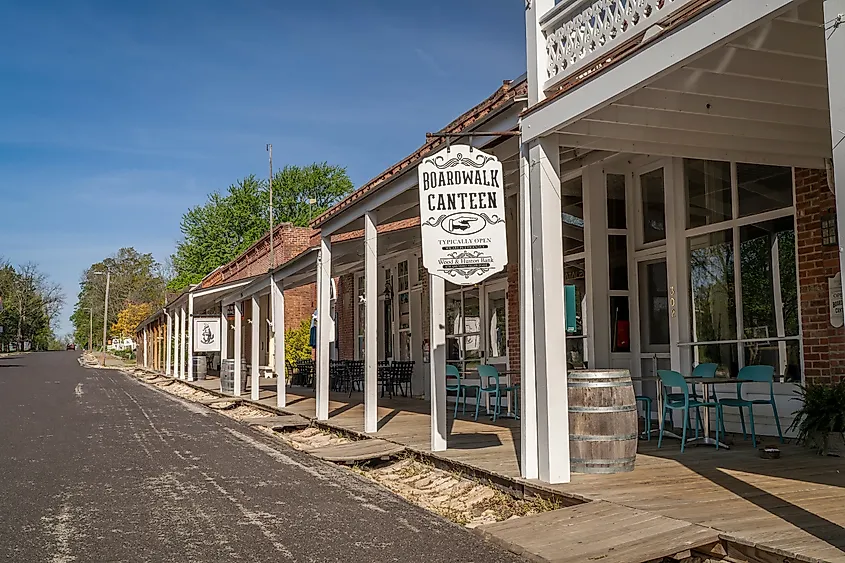
Arrow Rock may be small, but it’s mighty in spirit. It began as a Santa Fe Trail stop, and the same dusty paths that once led wagon trains west still wind through town today. Settlers, traders, and travelers all passed this way, leaving behind a crossroads that feels frozen in time.
At the Arrow Rock State Historic Site, weathered storefronts and tidy clapboard homes still guard the square, each one whispering stories of the 1830s. The J. Huston Tavern, built in 1834, still serves up warm meals beneath hand-hewn beams and flickering lanterns. Step inside and you’ll smell the same kind of hearth cooking that once fed weary travelers.
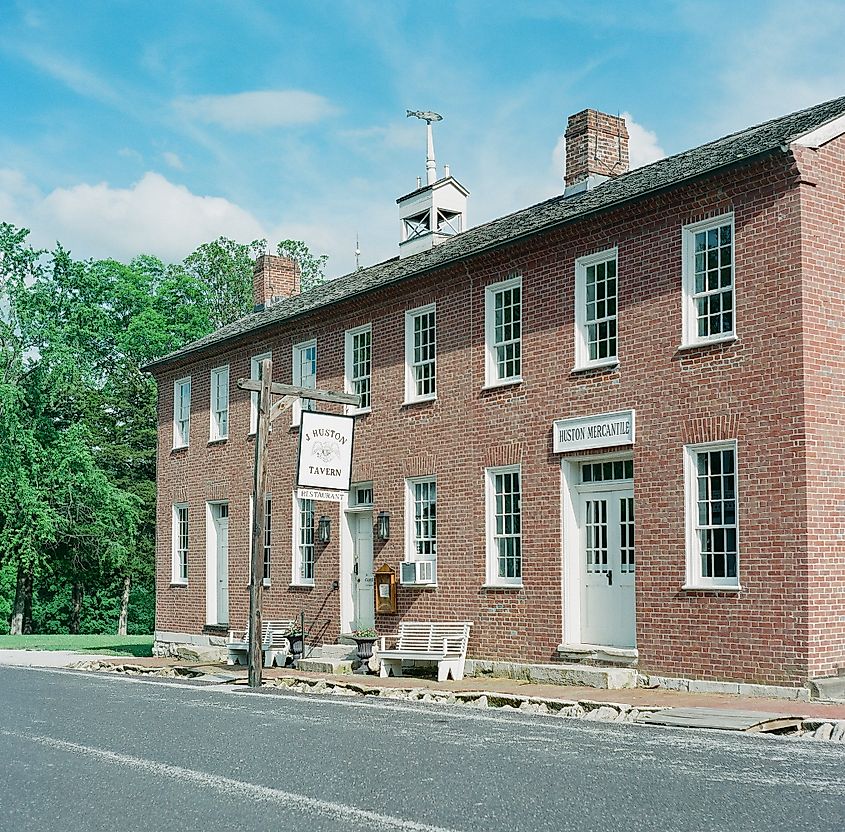
Just across the way, the Lyceum Theatre, a converted 19th-century church, brings the town to life each summer with professional productions that fill the old hall with laughter and music. The Arrow Rock Visitor Center ties it all together, offering exhibits on the town’s role in frontier trade and westward expansion.
Even the little Arrow Rock Cemetery hums with history, its worn stones marking pioneers who helped shape the West. Visit near sunset, when the prairie light turns gold, and you might swear you hear wagon wheels creaking somewhere just beyond the trees.
Boonville
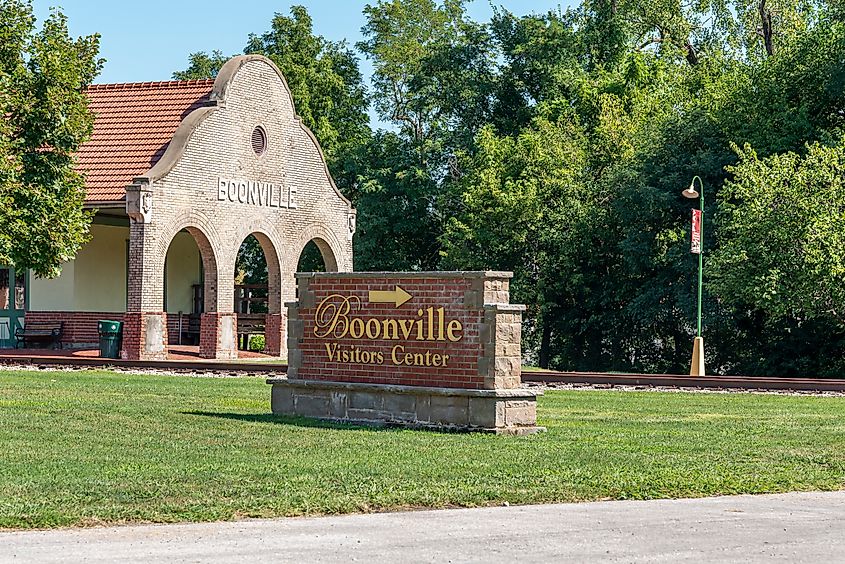
Boonville rests on the Missouri River, where history moves as steadily as the current. Founded in 1817, it began as a frontier trading post, grew into a key river port, and later weathered a Civil War battle that left its mark on the hills above town. Yet through all of it, Boonville still feels like a river town that remembers.
You can pedal along the Katy Trail past the old Katy Bridge, once part of the Missouri-Kansas-Texas Railroad and now being restored for future crossings. For now, riders use the nearby highway bridge’s path to keep the river views rolling. The Old Jail and Museum, built in the 1840s, still holds its thick stone walls and iron doors, echoing with stories of the outlaws once locked inside.
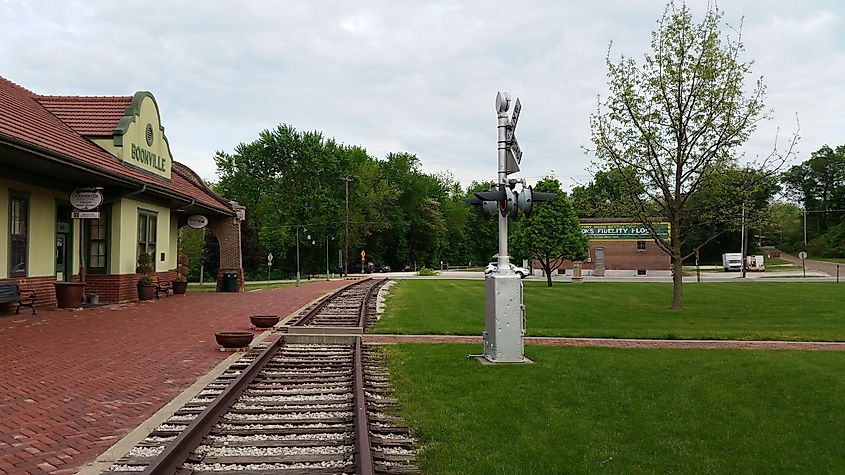
Step inside Thespian Hall, built in the 1850s and still hosting live performances, and you’re standing in one of the oldest theaters west of the Mississippi. Just beyond, Historic Downtown Boonville mixes antique shops, cafes, and brick storefronts that catch the evening light in that timeless, golden way only river towns seem to do. Throughout the years, Boonville has never lost its rhythm. It’s simply learned to flow with time, steady, unhurried, and sure of itself.
Lexington
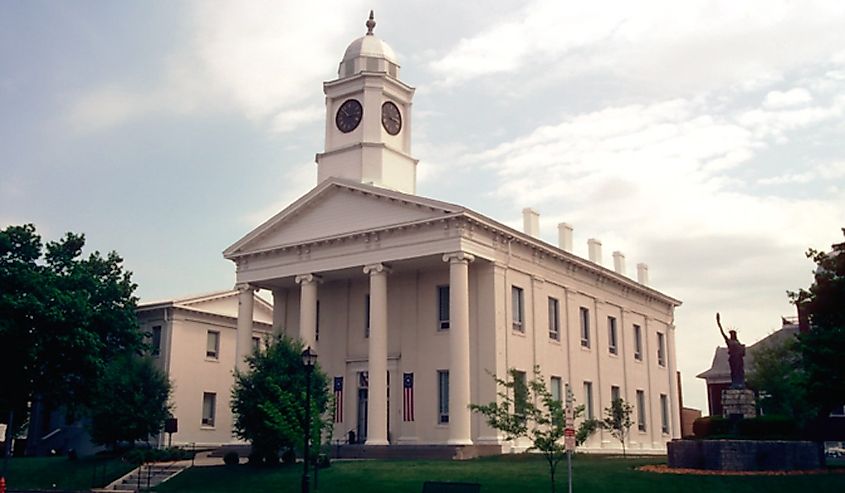
High above the Missouri River, Lexington carries its Civil War scars with quiet dignity. Founded in the 1820s, this once-bustling river port became the site of the Battle of Lexington State Historic Site in 1861, one of the earliest major engagements in Missouri. The clash between Union and Confederate forces left its mark on both the landscape and the people who called it home.
At the Lafayette County Courthouse, a cannonball from that battle still sits embedded in the outer wall, a small but powerful reminder of what unfolded here. Just beyond town, the Battle of Lexington State Historic Site stretches across rolling fields where troops once faced each other amid the smoke and thunder of war. Step inside the Anderson House, which served as a field hospital, and the quiet rooms tell their own story through preserved furnishings and faint traces of that turbulent time.
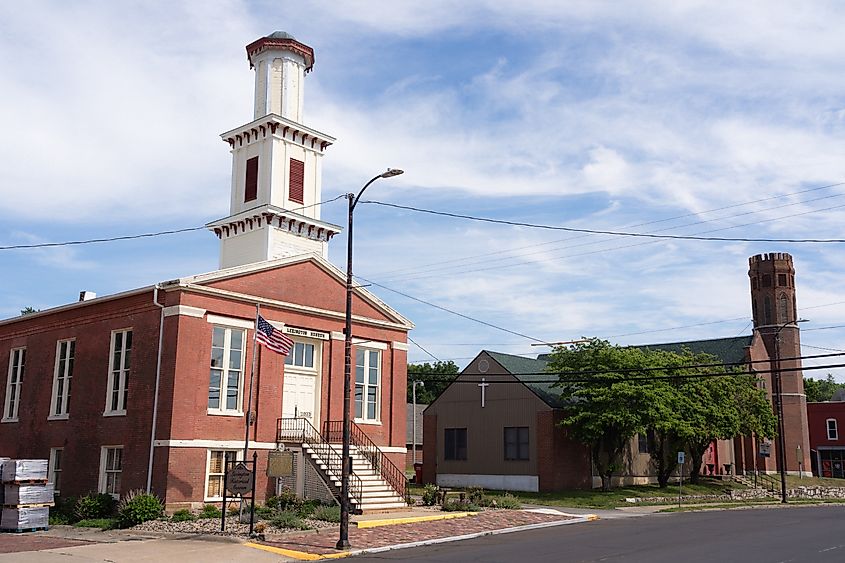
Lexington’s downtown still carries the grace of the 19th century, with brick streets, antique shops, and the steady toll of the courthouse bell. Walk the bluff at sunset, and you can almost hear the echoes of cannon fire fade into the sound of the river below. History may rest here, but it never truly sleeps.
Weston
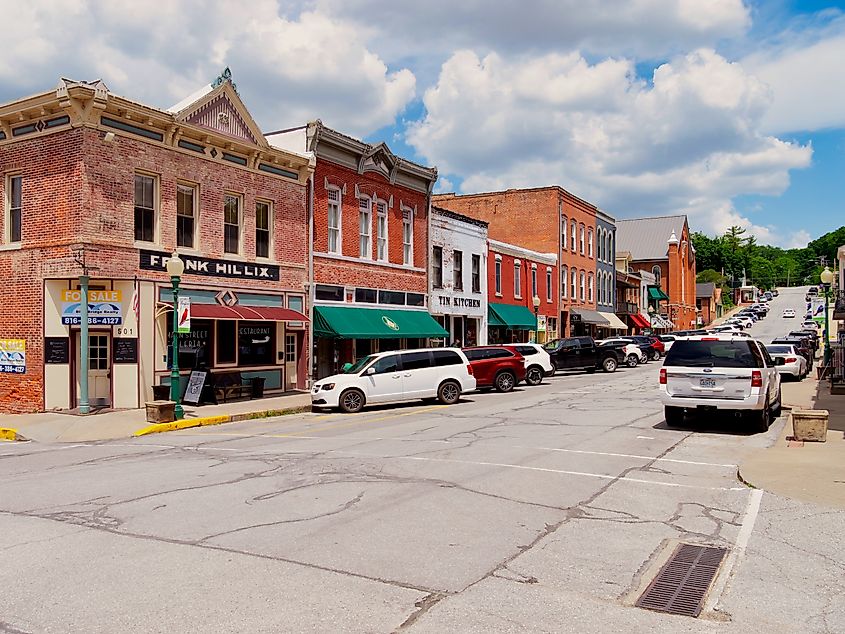
Once upon a time, Weston rivaled St. Louis as a busy riverport. When the Missouri River shifted course, most towns along its banks would have faded. Weston didn’t. It stood its ground and let the past take root.
The Weston Historic District feels nearly untouched by time. Cobblestone sidewalks and painted brick façades line the streets, while quiet front porches overlook tree-shaded lanes that seem built for conversation. Beneath the town, the Weston Brewing Company has revived its craft in the same cool limestone cellars where beer first flowed in 1842, keeping that old-world flavor very much alive. The aroma of malt and hops drifts softly through the tunnels, a reminder that history here isn’t static. It’s alive and poured fresh.
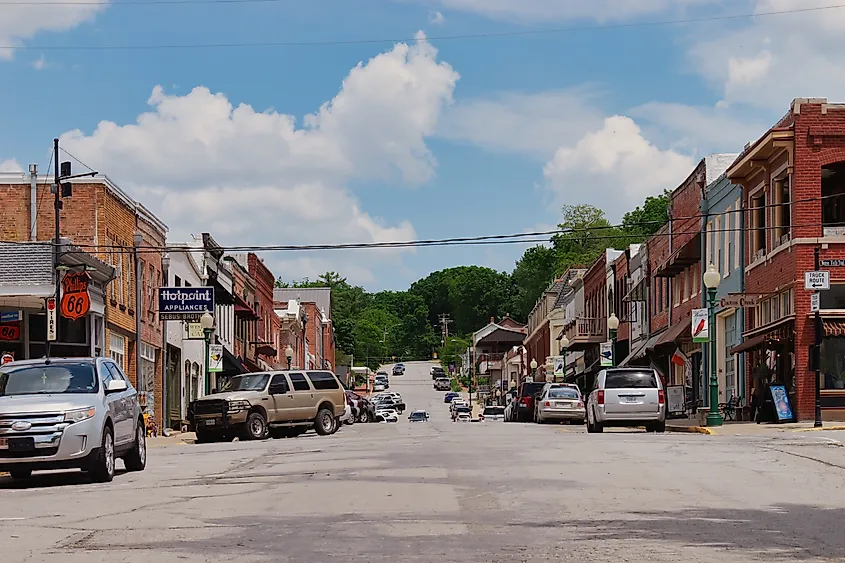
A short drive away, the Weston Bend State Park overlook offers sweeping views of the Missouri River valley, the same channel that once carried steamboats loaded with goods and dreams heading west. Back in town, the National Silk Art Museum showcases intricate woven masterpieces more than a century old, shimmering like captured sunlight behind glass.
In Weston, the pace is slower, the air thicker with memory, and everything seems to age gracefully. It’s the kind of town that doesn’t chase time. It simply keeps it.
Washington
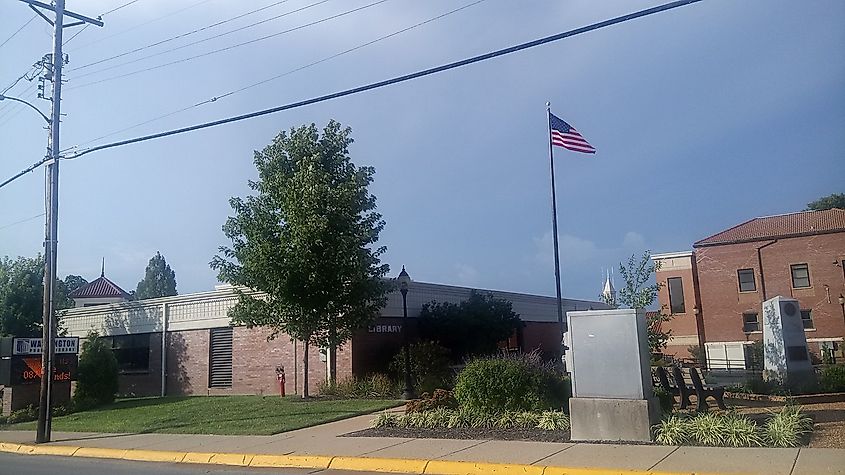
Washington grew from strong German roots, and you can still feel that craftsmanship in your bones when you walk its downtown. The scent of brick dust, river wind, and bakery sugar somehow mixes in the air, reminding you that this is a working town with a proud past.
In the Downtown Washington Historic District, more than 80 buildings date back to the mid-1800s. Each storefront seems to tell its own story, from bakeries to blacksmiths to builders who helped shape the character of this Missouri River town. The Missouri Meerschaum Factory, founded in 1869, continues to produce the famous corn cob pipes once favored by Mark Twain. Not far away, the Washington Historical Society Museum offers a deeper look into the lives of early settlers and artisans who built both homes and traditions that have endured for generations.
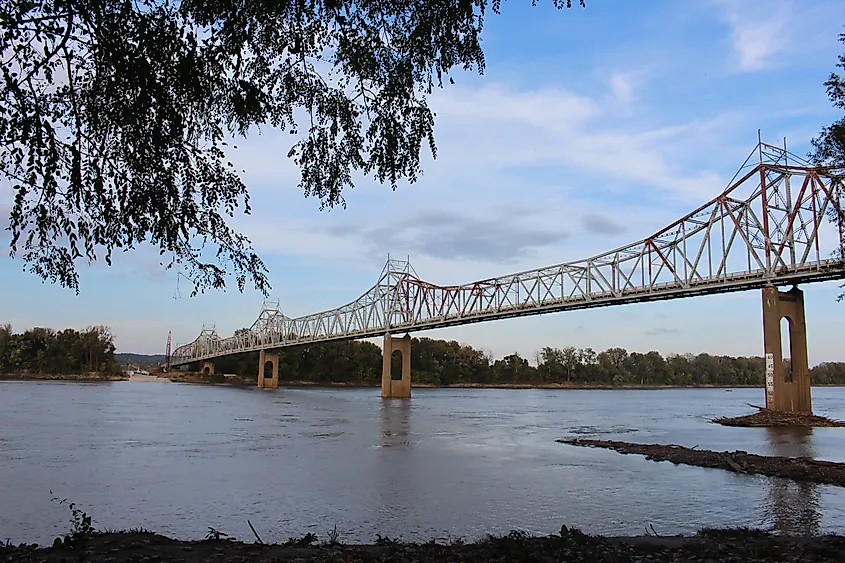
Along the riverfront, restored warehouses now hold cafes, shops, and wine bars, blending old-world charm with a touch of modern comfort. As the sun dips behind the hills, the streets take on a quiet glow. You might catch the faint tap of a hammer or the low hum of conversation, and for a moment, it feels like the town is still working, still breathing, just as it always has.
Hannibal
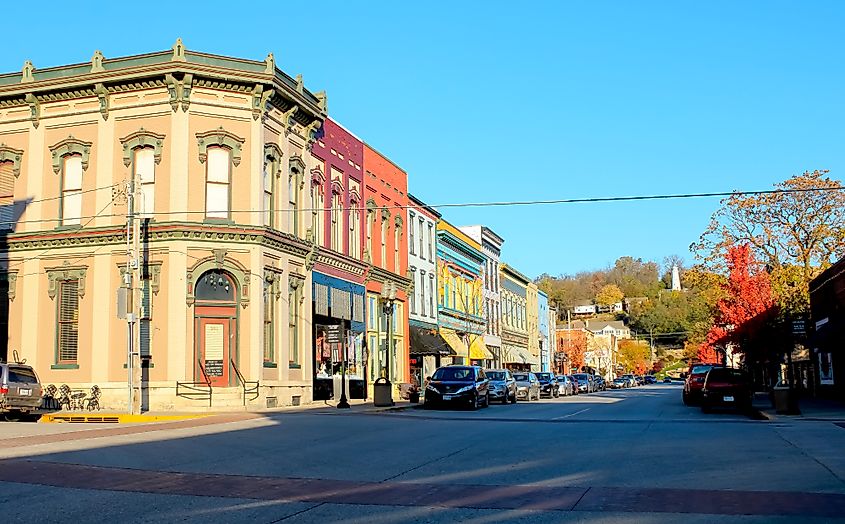
Hannibal is pure Americana. The Mississippi runs through its veins, and so does Mark Twain. Every street, bluff, and bend in the river feels like a page from one of his stories. You can almost hear Tom Sawyer’s laughter drifting over the water or imagine Huck Finn’s raft sliding through the current at dusk.
At the Mark Twain Boyhood Home and Museum, the white fence still gleams in the sun, and it’s easy to picture young Sam Clemens with a paintbrush in hand, bargaining with his friends. Beneath the hills, the Mark Twain Cave twists through limestone passages just as Twain described it, cool and mysterious, a place where echoes carry both adventure and fear.
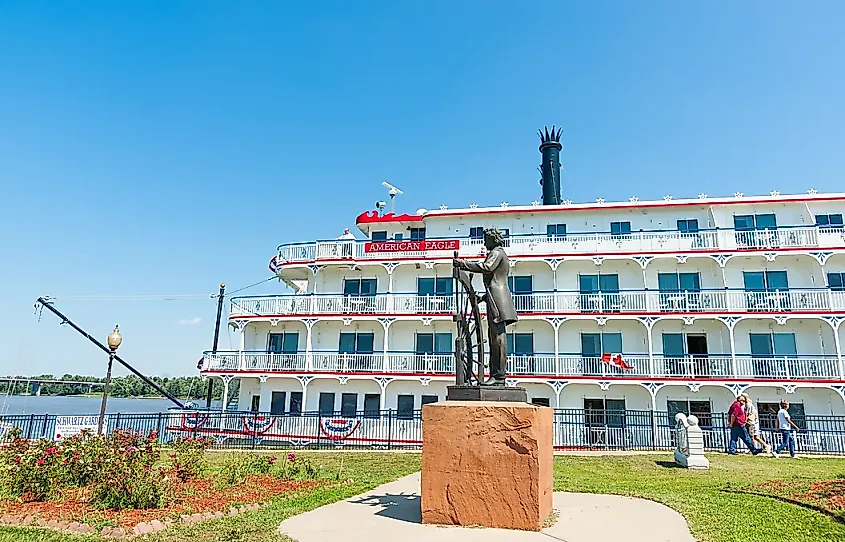
Downtown, the Hannibal History Museum dives into the steamboat days when the river was the town’s lifeline. Visitors can trace how trade, travel, and Twain’s words made Hannibal famous far beyond Missouri. Cap the day with a ride on the Mark Twain Riverboat, gliding past the same bluffs that inspired Life on the Mississippi. As the sky turns gold, fiction and memory merge. The river keeps rolling, and Hannibal keeps telling its story, steady, timeless, and always a little mischievous.
Carthage
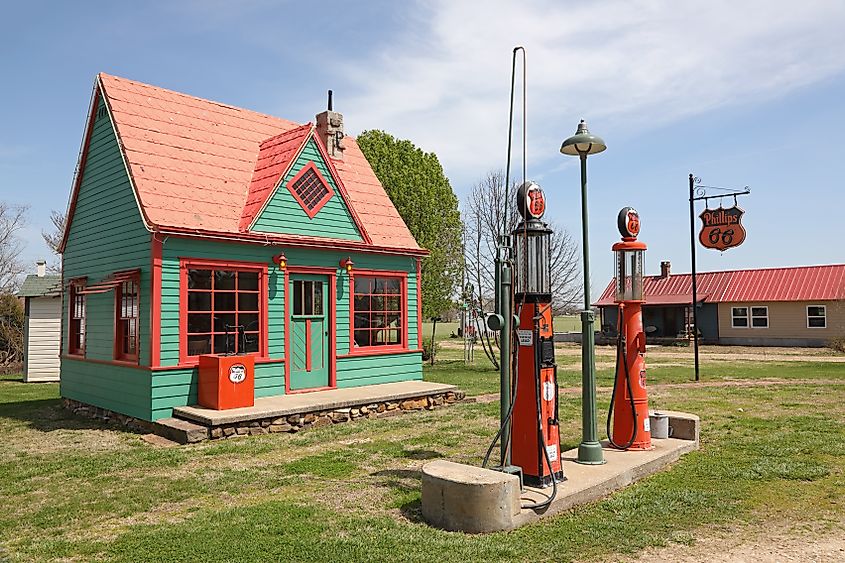
Carthage wears its history proudly, and maybe a little stubbornly too. Founded in the 1840s, it burned during the Civil War but rose again in grand Victorian fashion. That resilience gave it one of Missouri’s most striking collections of 19th-century architecture, where limestone, ironwork, and stained glass still tell stories of survival and style.
Start your visit at the Carthage Historic Square, where the Jasper County Courthouse towers over the heart of town like a fortress of gray stone. Just beyond, the Battle of Carthage State Historic Site marks the ground where the first major Civil War clash in Missouri unfolded. The peaceful lawns now contrast with the chaos that once swept across them.
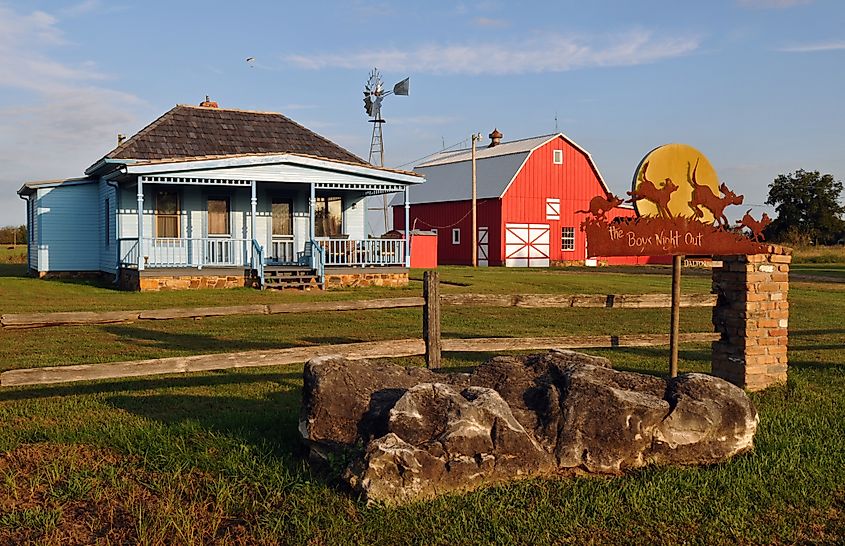
Tour the Phelps House, built in 1895, with its ornate woodwork and wraparound porch that whispers of the town’s postwar rebirth. Then follow the hum of old Route 66 to the 66 Drive-In Theatre, one of the few remaining in operation along the Mother Road. As neon flickers against the night sky and families settle in with popcorn and tailgates down, it’s clear that Carthage never forgot how to mix history with heart. Here, the past isn’t gone; it just learned how to shine again.
Fulton
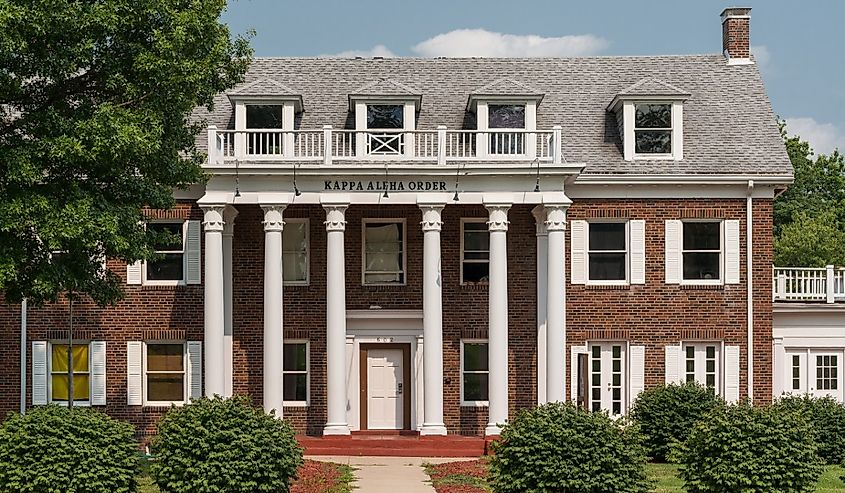
Fulton may look unassuming, but this small Missouri town changed the world in 1946 when Winston Churchill stood at Westminster College and delivered his famous “Iron Curtain” speech. It was a turning point in modern history, marking the dawn of the Cold War. For a quiet Midwestern town, that’s a lot of weight to carry, yet Fulton carries it with quiet pride.
The National Churchill Museum honors that legacy beneath the Church of St. Mary the Virgin, Aldermanbury, a 17th-century structure brought over from London and rebuilt here, brick by brick, after it was destroyed in the Blitz. Walking through its stone archways and vaulted ceilings feels like crossing continents without ever leaving Missouri.
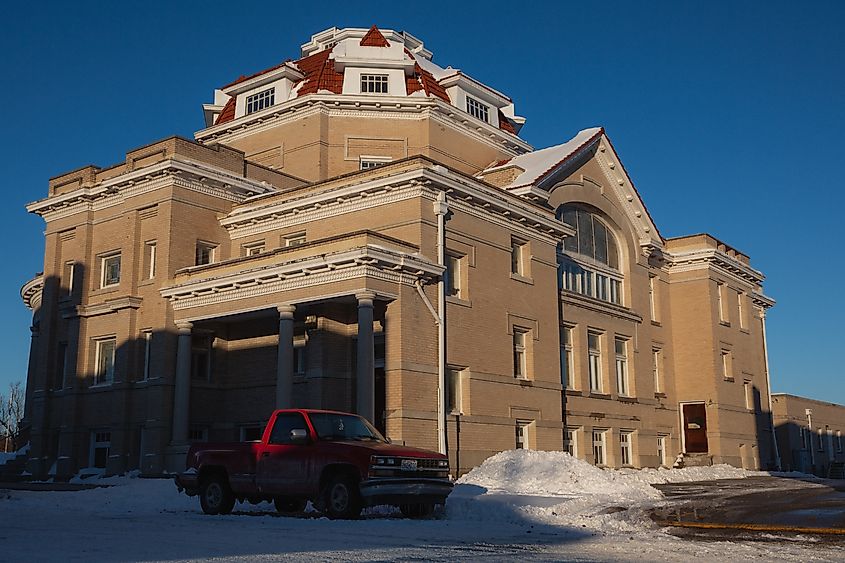
Just down the road, the Brick District hums with small-town life, its early 1900s storefronts now filled with coffee shops, galleries, and friendly chatter spilling onto the sidewalks. For a change of pace, visit the Auto World Museum, where gleaming classic cars tell their own story of American ingenuity and progress.
Fulton blends history and heart in a way few places can. It’s a reminder that even the smallest towns can shape global events and still welcome you in for a cup of coffee afterward.
Missouri’s Living History
Travel across Missouri and you’ll realize the past isn’t hidden behind glass. It’s right under your feet. It’s in the creak of a floorboard, the clang of a courthouse bell, the smell of wine cooling in a cellar built before the Civil War.
You can trace French footsteps in Ste. Genevieve, follow Twain’s words along the Mississippi, or walk Lexington’s quiet hills where soldiers once stood. These towns don’t just remember their history. They invite you to walk through it. And maybe, if you linger long enough, it’ll start to feel like yours, too.











